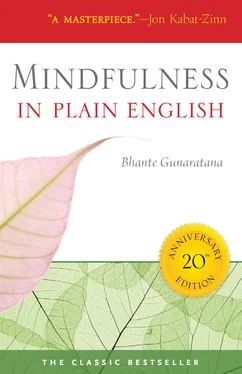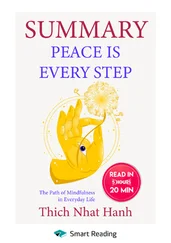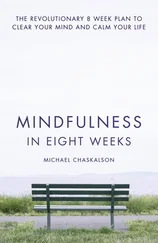Henepola Gunaratana - Mindfulness in Plain English
Здесь есть возможность читать онлайн «Henepola Gunaratana - Mindfulness in Plain English» весь текст электронной книги совершенно бесплатно (целиком полную версию без сокращений). В некоторых случаях можно слушать аудио, скачать через торрент в формате fb2 и присутствует краткое содержание. Жанр: Самосовершенствование, на английском языке. Описание произведения, (предисловие) а так же отзывы посетителей доступны на портале библиотеки ЛибКат.
- Название:Mindfulness in Plain English
- Автор:
- Жанр:
- Год:неизвестен
- ISBN:нет данных
- Рейтинг книги:3 / 5. Голосов: 1
-
Избранное:Добавить в избранное
- Отзывы:
-
Ваша оценка:
- 60
- 1
- 2
- 3
- 4
- 5
Mindfulness in Plain English: краткое содержание, описание и аннотация
Предлагаем к чтению аннотацию, описание, краткое содержание или предисловие (зависит от того, что написал сам автор книги «Mindfulness in Plain English»). Если вы не нашли необходимую информацию о книге — напишите в комментариях, мы постараемся отыскать её.
Mindfulness in Plain English — читать онлайн бесплатно полную книгу (весь текст) целиком
Ниже представлен текст книги, разбитый по страницам. Система сохранения места последней прочитанной страницы, позволяет с удобством читать онлайн бесплатно книгу «Mindfulness in Plain English», без необходимости каждый раз заново искать на чём Вы остановились. Поставьте закладку, и сможете в любой момент перейти на страницу, на которой закончили чтение.
Интервал:
Закладка:
The object of Vipassana practice is to learn to pay attention. We think we are doing this already, but that is an illusion. It comes from the fact that we are paying so little attention to the ongoing surge of our own life experiences that we might just as well be asleep. We are simply not paying enough attention to notice that we are not paying attention. It is another Catch-22.
Through the process of mindfulness, we slowly become aware of what we really are down below the ego image. We wake up to what life really is. It is not just a parade of ups and downs, lollipops and smacks on the wrist. That is an illusion. Life has a much deeper texture than that if we bother to look, and if we look in the right way.
Vipassana is a form of mental training that will teach you to experience the world in an entirely new way. You will learn for the first time what is truly happening to you, around you and within you. It is a process of self discovery, a participatory investigation in which you observe your own experiences while participating in them, and as they occur. The practice must be approached with this attitude.
“Never mind what I have been taught. Forget about theories and prejudgments and stereotypes. I want to understand the true nature of life. I want to know what this experience of being alive really is. I want to apprehend the true and deepest qualities of life, and I don’t want to just accept somebody else’s explanation. I want to see it for myself.” If you pursue your meditation practice with this attitude, you will succeed. You’ll find yourself observing things objectively, exactly as they are—flowing and changing from moment to moment. Life then takes on an unbelievable richness which cannot be described. It has to be experienced.
The Pali term for Insight meditation is Vipassana Bhavana. Bhavana comes from the root ‘Bhu’, which means to grow or to become. Therefore Bhavana means to cultivate, and the word is always used in reference to the mind. Bhavana means mental cultivation. ‘Vipassana’ is derived from two roots. ‘Passana’ means seeing or perceiving. ‘Vi’ is a prefix with the complex set of connotations. The basic meaning is ‘in a special way’. But there also is the connotation of both ‘into’ and ‘through’. The whole meaning of the word is looking into something with clarity and precision, seeing each component as distinct and separate, and piercing all the way through so as to perceive the most fundamental reality of that thing. This process leads to insight into the basic reality of whatever is being inspected. Put it all together and ‘Vipassana Bhavana’ means the cultivation of the mind, aimed at seeing in a special way that leads to insight and to full understanding.
In Vipassana mediation we cultivate this special way of seeing life. We train ourselves to see reality exactly as it is, and we call this special mode of perception ‘mindfulness’. This process of mindfulness is really quite different from what we usually do. We usually do not look into what is really there in front of us. We see life through a screen of thoughts and concepts, and we mistake those mental objects for the reality. We get so caught up in this endless thought stream that reality flows by unnoticed. We spend our time engrossed in activity, caught up in an eternal pursuit of pleasure and gratification and an eternal flight from pain and unpleasantness. We spend all of our energies trying to make ourselves feel better, trying to bury our fears. We are endlessly seeking security. Meanwhile, the world of real experience flows by untouched and untasted. In Vipassana meditation we train ourselves to ignore the constant impulses to be more comfortable, and we dive into the reality instead. The ironic thing is that real peace comes only when you stop chasing it. Another Catch-22.
When you relax your driving desire for comfort, real fulfillment arises. When you drop your hectic pursuit of gratification, the real beauty of life comes out. When you seek to know the reality without illusion, complete with all its pain and danger, that is when real freedom and security are yours. This is not some doctrine we are trying to drill into you. This is an observable reality, a thing you can and should see for yourself.
Buddhism is 2500 years old, and any thought system of that vintage has time to develop layers and layers of doctrine and ritual. Nevertheless, the fundamental attitude of Buddhism is intensely empirical and anti-authoritarian. Gotama the Buddha was a highly unorthodox individual and real anti-traditionalist. He did not offer his teaching as a set of dogmas, but rather as a set of propositions for each individual to investigate for himself. His invitation to one and all was ‘Come and See’. One of the things he said to his followers was “Place no head above your own.” By this he meant, don’t accept somebody else’s word. See for yourself.
We want you to apply this attitude to every word you read in this manual. We are not making statements that you would accept merely because we are authorities in the field. Blind faith has nothing to do with this. These are experiential realities. Learn to adjust your mode of perception according to instructions given in the book, and you will see for yourself. That and only that provides ground for your faith. Insight meditation is essentially a practice of investigative personal discovery.
Having said this, we will present here a very short synopsis of some of the key points of Buddhist philosophy. We make not attempt to be thorough, since that has been quite nicely done in many other books. This material is essential to understanding Vipassana, therefore, some mention must be made.
From the Buddhist point of view, we human beings live in a very peculiar fashion. We view impermanent things as permanent, though everything is changing all around us. The process of change is constant and eternal. As you read these words, your body is aging. But you pay no attention to that. The book in you hand is decaying. The print is fading and the pages are becoming brittle. The walls around you are aging. The molecules within those walls are vibrating at an enormous rate, and everything is shifting, going to pieces and dissolving slowly. You pay no attention to that, either. Then one day you look around you. Your body is wrinkled and squeaky and you hurt. The book is a yellowed, useless lump; the building is caving in. So you pine for lost youth and you cry when the possessions are gone. Where does this pain come from? It comes from your own inattention. You failed to look closely at life. You failed to observe the constantly shifting flow of the world as it went by. You set up a collection of mental constructions, ‘me’, ‘the book’, ‘the building’, and you assume that they would endure forever. They never do. But you can tune into the constantly ongoing change. You can learn to perceive your life as an ever-flowing movement, a thing of great beauty like a dance or symphony. You can learn to take joy in the perpetual passing away of all phenomena. You can learn to live with the flow of existence rather than running perpetually against the grain. You can learn this. It is just a matter of time and training.
Our human perceptual habits are remarkably stupid in some ways. We tune out 99% of all the sensory stimuli we actually receive, and we solidify the remainder into discrete mental objects. Then we react to those mental objects in programmed habitual ways. An example: There you are, sitting alone in the stillness of a peaceful night. A dog barks in the distance. The perception itself is indescribably beautiful if you bother to examine it. Up out of that sea of silence come surging waves of sonic vibration. You start to hear the lovely complex patterns, and they are turned into scintillating electronic stimulations within the nervous system. The process is beautiful and fulfilling in itself. We humans tend to ignore it totally. Instead, we solidify that perception into a mental object. We paste a mental picture on it and we launch into a series of emotional and conceptual reactions to it. “There is that dog again. He is always barking at night. What a nuisance. Every night he is a real bother. Somebody should do something. Maybe I should call a cop. No, a dog catcher. So, I’ll call the pound. No, maybe I’ll just write a real nasty letter to the guy who owns that dog. No, too much trouble. I’ll just get an ear plug.” They are just perceptual and mental habits. You learn to respond this way as a child by copying the perceptual habits of those around you. These perceptual responses are not inherent in the structure of the nervous system. The circuits are there. But this is not the only way that our mental machinery can be used. That which has been learned can be unlearned. The first step is to realize what you are doing, as you are doing it, and stand back and quietly watch.
Читать дальшеИнтервал:
Закладка:
Похожие книги на «Mindfulness in Plain English»
Представляем Вашему вниманию похожие книги на «Mindfulness in Plain English» списком для выбора. Мы отобрали схожую по названию и смыслу литературу в надежде предоставить читателям больше вариантов отыскать новые, интересные, ещё непрочитанные произведения.
Обсуждение, отзывы о книге «Mindfulness in Plain English» и просто собственные мнения читателей. Оставьте ваши комментарии, напишите, что Вы думаете о произведении, его смысле или главных героях. Укажите что конкретно понравилось, а что нет, и почему Вы так считаете.












